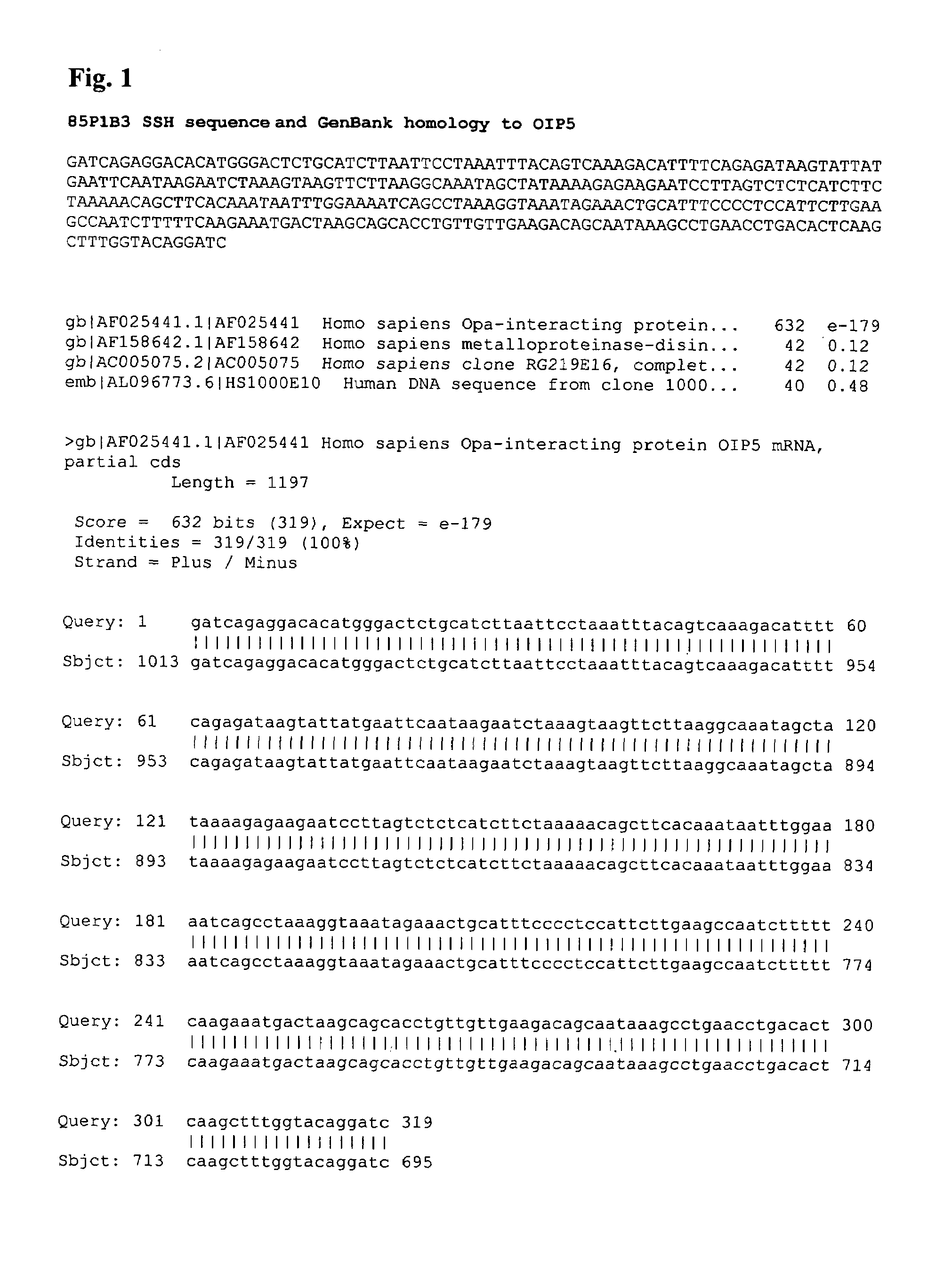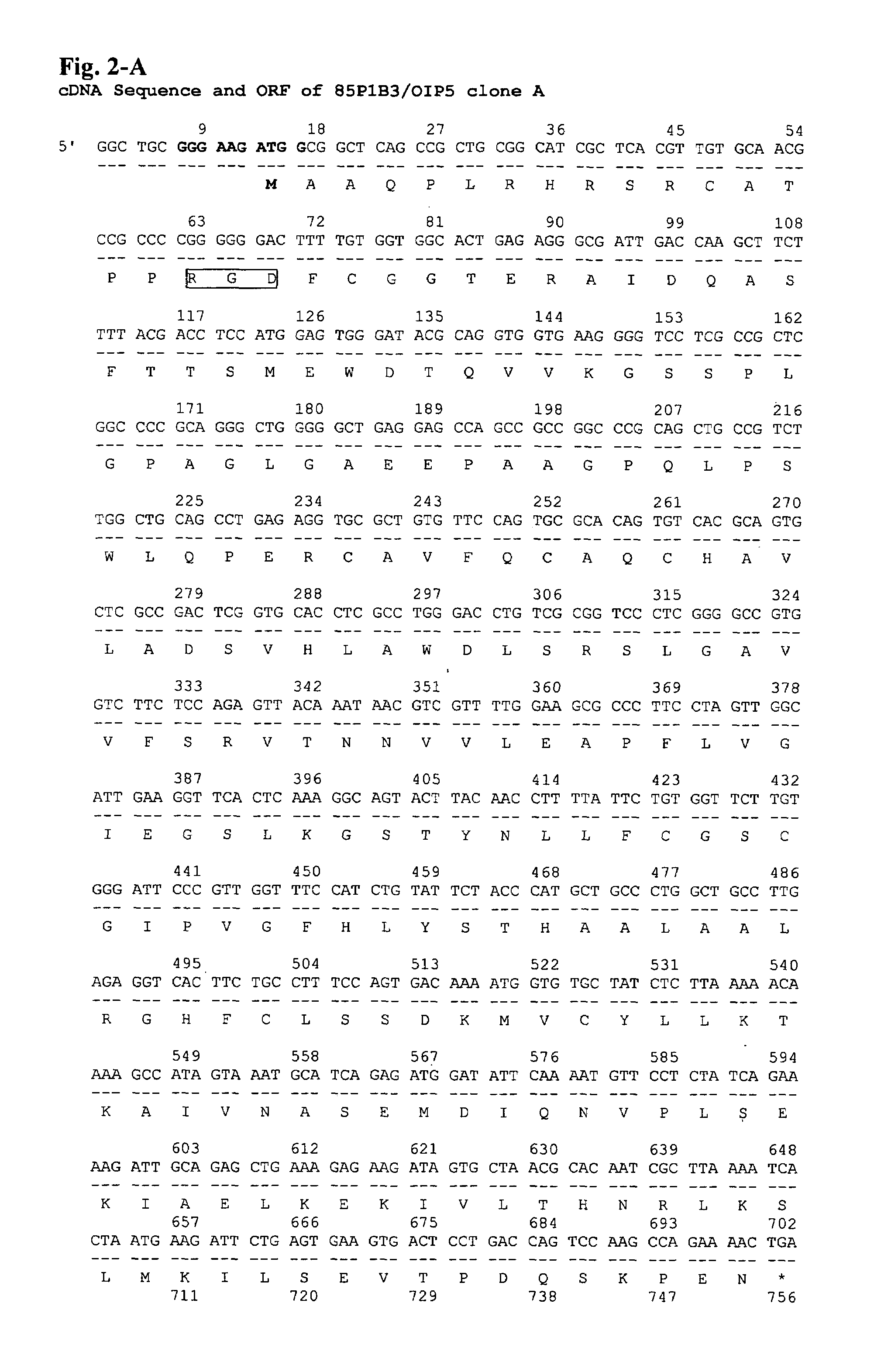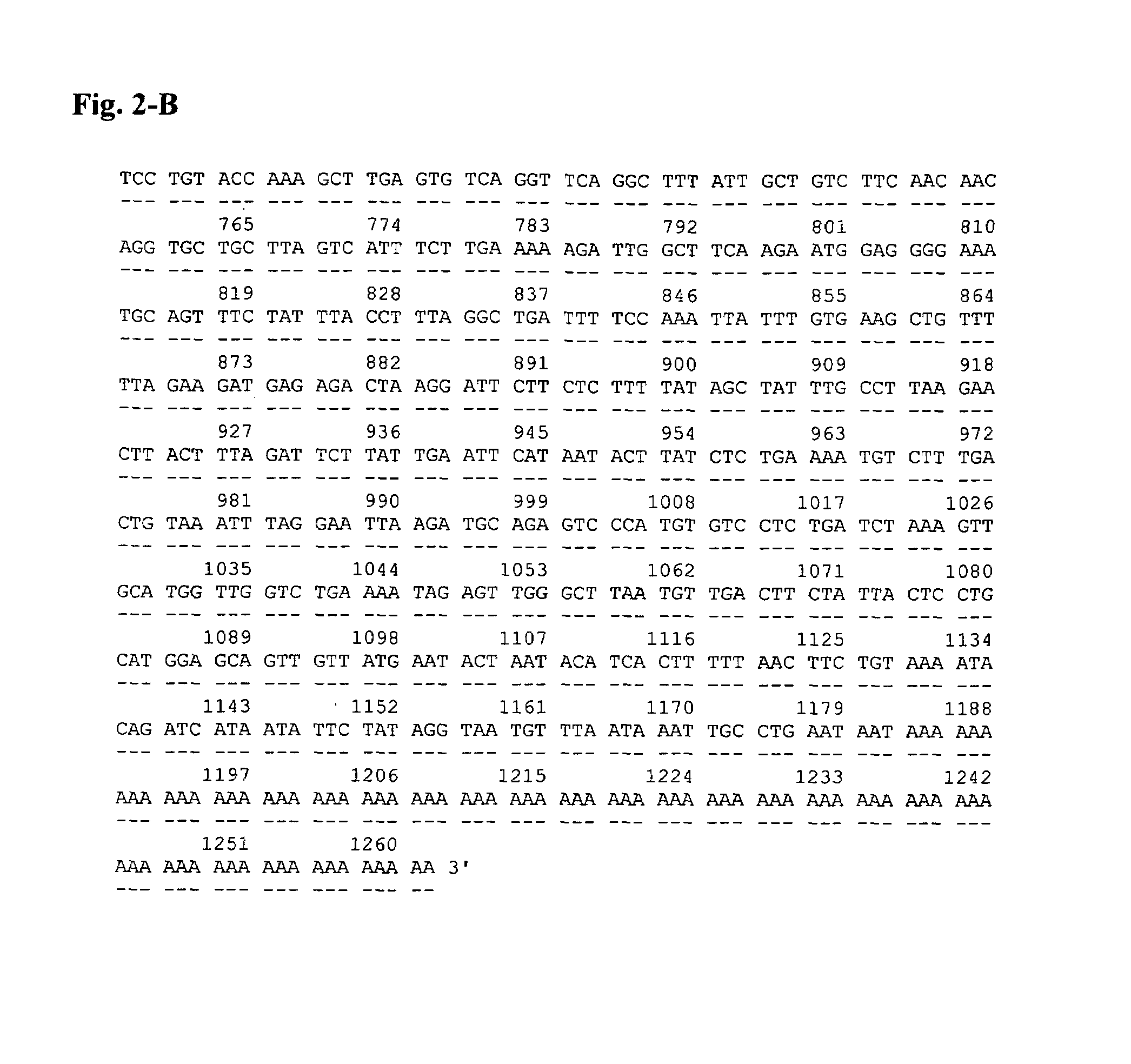Antibodies that recognize the 85P1B3 protein useful in treatment and detection of cancer
a technology of 85p1b3 and antibodies, applied in the field of 85p1b3, can solve the problems of ineffective treatment for many patients, undesirable consequences, and still no effective treatment for metastatic prostate cancer, and achieve the effect of inhibiting transcription, translation, processing or function
- Summary
- Abstract
- Description
- Claims
- Application Information
AI Technical Summary
Benefits of technology
Problems solved by technology
Method used
Image
Examples
example 1
SSH-Generated Isolation of a cDNA Fragment of the 85P1B3 Gene
[0400]To isolate genes that are involved in the progression of androgen dependent (AD) prostate cancer to androgen independent (AI) cancer, we conducted an experiment with the LAPC-4 AD xenograft in male SCID mice. Mice that harbored LAPC-4 AD xenografts were castrated when the tumors reached a size of 1 cm in diameter. The tumors regressed in size and temporarily stopped producing the androgen dependent protein PSA. Seven to fourteen days post-castration, PSA levels were detectable again in the blood of the mice. Eventually the tumors develop an AI phenotype and start growing again in the castrated males. Tumors were harvested at different time points after castration to identify genes that are turned on or off during the transition to androgen independence.
[0401]The gene 85P1B3 was derived from an LAPC-4 AD (3 days post-castration) minus LAPC-4 AD subtraction. The SSH DNA sequence of 319 bp (FIG. 1) is a fragment of the ...
example 2
Full Length Cloning of 85P1B3
[0426]To isolate genes that are involved in the progression of androgen dependent (AD) prostate cancer to androgen independent (AI) cancer, an experiment was conducted with the LAPC-4 AD xenograft in male SCID mice. Mice that harbored LAPC-4 AD xenografts were castrated when the tumors reached a size of 1 cm in diameter. The tumors regressed in size and temporarily stopped producing the androgen dependent protein PSA. Seven to fourteen days post-castration, PSA levels were detectable again in the blood of the mice. Eventually the tumors develop an AI phenotype and start growing again in the castrated males. Tumors were harvested at different time points after castration to identify genes that are turned on or off during the transition to androgen independence.
[0427]The gene 85P1B3 was derived from an LAPC-4 AD (3 days post-castration minus LAPC-4 AD) (no castration) subtraction. The SSH DNA sequence (FIG. 1) was designated 85P1B3. cDNA clone 85P1B3-clone...
example 3
Chromosomal Localization
[0428]Chromosomal localization can implicate genes in disease pathogenesis. Several chromosome mapping approaches are available in the art, including fluorescent in situ hybridization (FISH), human / hamster radiation hybrid (RH) panels (Walter et al., 1994; Nature Genetics 7:22; Research Genetics, Huntsville Ala.), human-rodent somatic cell hybrid panels such as is available from the Coriell Institute (Camden, N.J.), and genomic viewers utilizing BLAST homologies to sequenced and mapped genomic clones (NCBI, Bethesda, Md.). 85P1B3 maps to chromosome 15q14, using 85P1B3 sequence and the NCBI BLAST tool
[0429]The chromosomal localization of 85P1B3 was also determined using the GeneBridge4 Human / Hamster radiation hybrid (RH) panel (Walter et al., 1994; Nature Genetics 7:22)(Research Genetics, Huntsville Ala.).
[0430]The following PCR primers were used:
[0431]
(SEQ ID NO:732)85P1B3.15′ catgggactctgcatcttaattcc 3′(SEQ ID NO:733)85P1B3.25′ caggttcaggctttattgctgtct 3′
[04...
PUM
 Login to View More
Login to View More Abstract
Description
Claims
Application Information
 Login to View More
Login to View More - R&D
- Intellectual Property
- Life Sciences
- Materials
- Tech Scout
- Unparalleled Data Quality
- Higher Quality Content
- 60% Fewer Hallucinations
Browse by: Latest US Patents, China's latest patents, Technical Efficacy Thesaurus, Application Domain, Technology Topic, Popular Technical Reports.
© 2025 PatSnap. All rights reserved.Legal|Privacy policy|Modern Slavery Act Transparency Statement|Sitemap|About US| Contact US: help@patsnap.com



